Exploring Ayodhya’s Spiritual and Cultural Heartbeat
Introduction
Ayodhya, a city steeped in Hindu mythology and history, is nestled in the heart of Uttar Pradesh. It’s a symbol of India’s deep spiritual roots and rich history. Known as the birthplace of Lord Ram, Ayodhya is a destination that resonates with faith, devotion, and mythological grandeur. The city was once the capital of the prosperous Kosala kingdom, ruled by the Suryavanshi dynasty. Whether you’re a pilgrim, a history enthusiast, or simply a traveler seeking new experiences, Ayodhya promises to leave an indelible mark on your soul.
A Glimpse into Ayodhya’s History
According to Hindu scriptures, Ayodhya was the capital of the ancient Kosala kingdom, ruled by the Suryavanshi dynasty. It was here that Lord Ram, the seventh incarnation of Vishnu, was born to King Dashrath and Queen Kaushalya. The city is also associated with other significant figures in Hindu mythology, including Sita, Lakshman, Bharata, and Shatrughna.
Ayodhya’s history has been marked by periods of prosperity and decline. The city witnessed its golden age during the reign of King Dashrath, when it was a center of culture, learning, and spirituality. The city is adorned with ancient temples and monuments, each telling a story of its own. Exploring Ayodhya is like walking through a living tapestry of epic tales and historical events.
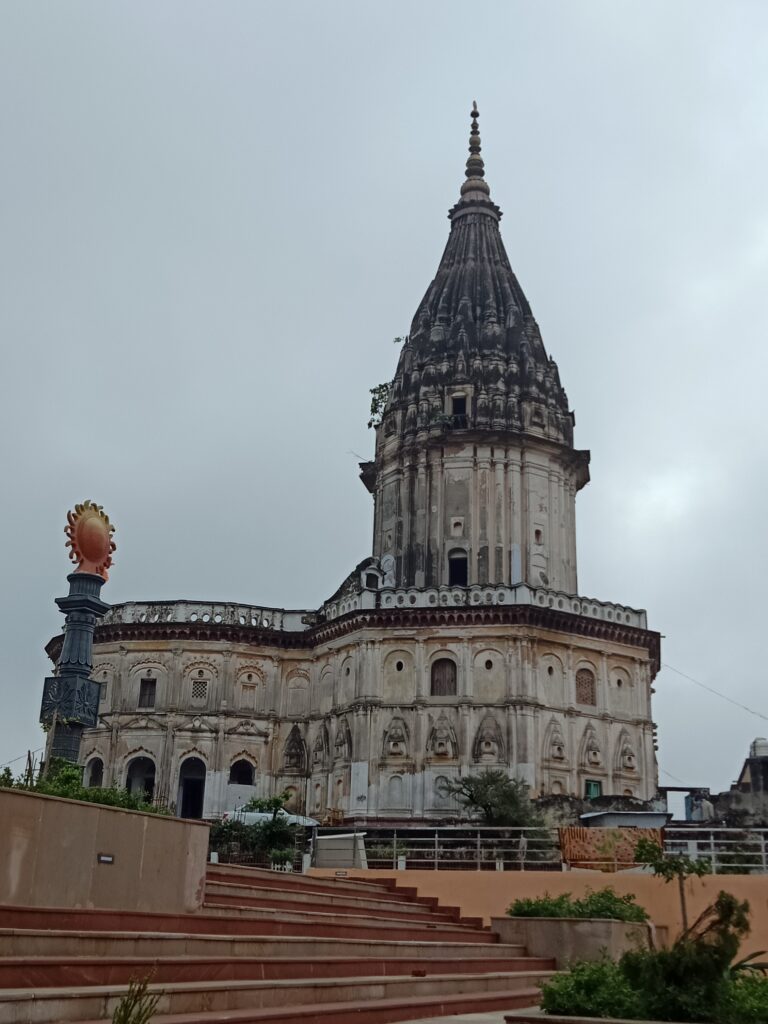
The Revival of a Sacred City
For centuries, Ayodhya was a center of pilgrimage and devotion. However, the city’s glory dimmed over time due to foreign invasion and severe destruction.
One of the most contentious issues in India’s history has been the Ram Janmbhoomi dispute, which centered on the land where the Babri Masjid stood in Ayodhya. It resulted in severe communal violance across India particularly in 1992 with the demolition of Babri Masjid. This was immediately followed by prolonged legal dispute among various committees.
In recent years, a significant chapter unfolded in the history of Ayodhya. A long-standing dispute over the Ram Janambhoomi site, believed to be the birthplace of Lord Rama, finally reached a resolution.
In a historic verdict in 2019, the Supreme Court of India paved the way for the construction of a grand Ram Janmabhoomi temple at the disputed site. This momentous decision has sparked renewed interest in Ayodhya, making it a major pilgrimage destination for Hindus worldwide.
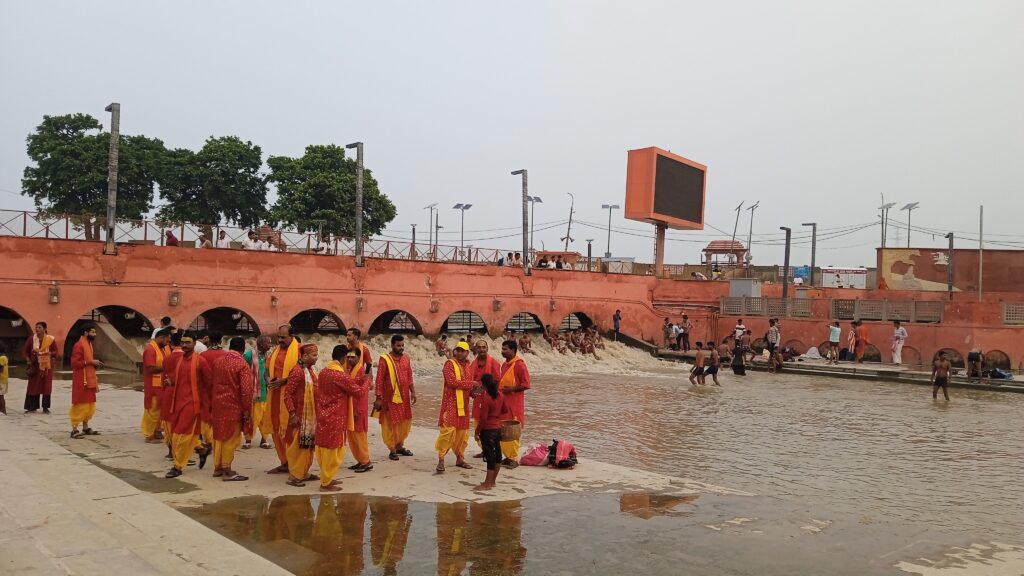
The New Ram Temple: A Marvel of Architecture
The Bhoomi Pujan for the Ram Janmabhoomi temple was a significant event held on August 5, 2020, marking the beginning of the temple’s construction in Ayodhya in the state of Uttar Pradesh in the northern part of India. This ceremony involved various religious rituals and prayers to bless the land before the construction started. Prime Minister Shri Narendra Modi and other prominent leaders attended the event, emphasizing its national importance.
The excavation for the foundation of the new temple started in Jan 2021. The entire area is virtually divided into 5 zones. After one year of excavation and piling, the erection of pillars started in Jan 2022. Finally once the ground floor was completed, the temple was inaugurated by Prime Minister Shri Narendra Modi on 22-Jan-2024 and opened to the public.
The new Ram temple, a symbol of faith and devotion, is a masterpiece of modern Indian architecture. The temple complex is designed to reflect the grandeur of ancient Indian temples, with intricate carvings, ornate pillars, and stunning domes. The temple’s architecture is a harmonious blend of traditional and contemporary styles, creating a visually stunning and spiritually uplifting experience. To get an official update of the rules and regulations of Shri Ram Janmbhoomi temple, please click here.
Planning Your Visit
How to Reach Ayodhya
Ayodhya is well-connected by various modes of transportation:
By Air:
- The nearest airport is the Maharishi Valmiki International Airport in Ayodhya. This airport is well-connected with major cities in India. From the airport, you can hire a taxi or take a local bus to reach the temple complex within 30 minutes.
- The next well known airport is in Lucknow, approximately 150 kilometers away. Lucknow’s Chaudhary Charan Singh International Airport is well-connected to major cities in India and abroad and caters to numerous tourists. From Lucknow, you can hire a taxi or take a bus to Ayodhya in just 2.5 hours to 3 hours depending on traffic.
By Train:
Ayodhya Junction is the primary railway station and is well-connected to major cities across India. Trains from Delhi, Mumbai, Kolkata, and other metropolitan areas regularly ply to and from Ayodhya Dham Station. Ayodhya Dham station is just 450 meters from the city’s major attraction.
By Road:
Regular bus services from Lucknow, Varanasi, and other nearby cities make it convenient for travelers to visit Ayodhya by road. The roads are excellent and Ayodhya is very close to Purvanchal Expressway making it quicker for people from Eastern India to visit Ayodhya. Instead of staying in Ayodhya, many people take a day tour from Varanasi or Lucknow but I felt you can feel the ambience if you stay for at least one night.
Must-Visit Places
- Ram Janmabhoomi Temple: At the heart of Ayodhya lies this iconic temple, newly inaugurated and radiating a divine aura. The temple’s architecture is a magnificent blend of traditional and modern design, symbolizing faith and resilience.
- Hanuman Garhi: This temple dedicated to Lord Hanuman offers spiritual solace. ‘Garh’ means fort, the temple is built on a fort and it is believed that Bajrangbali is protecting the city from Hanuman Garhi.
- Kanak Bhawan: It is believed that this house was gifted by Queen Kaikeyi to Lord Ram and Sita Devi after their marriage. This temple exudes royal charm and the wall is painted with the stories from Ramayana. This temple was renovated by King Vikramaditya of Gupta Dynasty.
- Nageshwarnath Temple: An ancient temple dedicated to Lord Shiva, known for its vibrant festivities during Shivaratri.
- Guptar Ghat: Guptar Ghat is situated on the serene banks of the Sarayu River bit away from the city center, this ghat is believed to be the spot where Lord Ram took his final journey.
- Tulsi Smarak Bhawan: A cultural center dedicated to Goswami Tulsidas, the composer of the Ramcharitmanas, featuring regular performances depicting episodes from the Ramayana.
- Ram ki Paidi: Ram ki Paidi is a spiritual haven. The water is pumped from River Saruyu to create a beautiful ghat for the pilgrims to take holy dip. The ghats are beautifully illuminated at night, creating a mesmerizing sight, especially during festivals like Diwali, when hundred thousands of diyas (lamps) are lit, setting a world record. Laser shows are organized during Diwali showing the story of Ramayana. Surrounded by ancient temples, Ram ki Paidi offers a peaceful retreat and a glimpse into Ayodhya’s rich cultural heritage. It’s a perfect spot for both spiritual reflection and leisurely strolls along the riverbank.
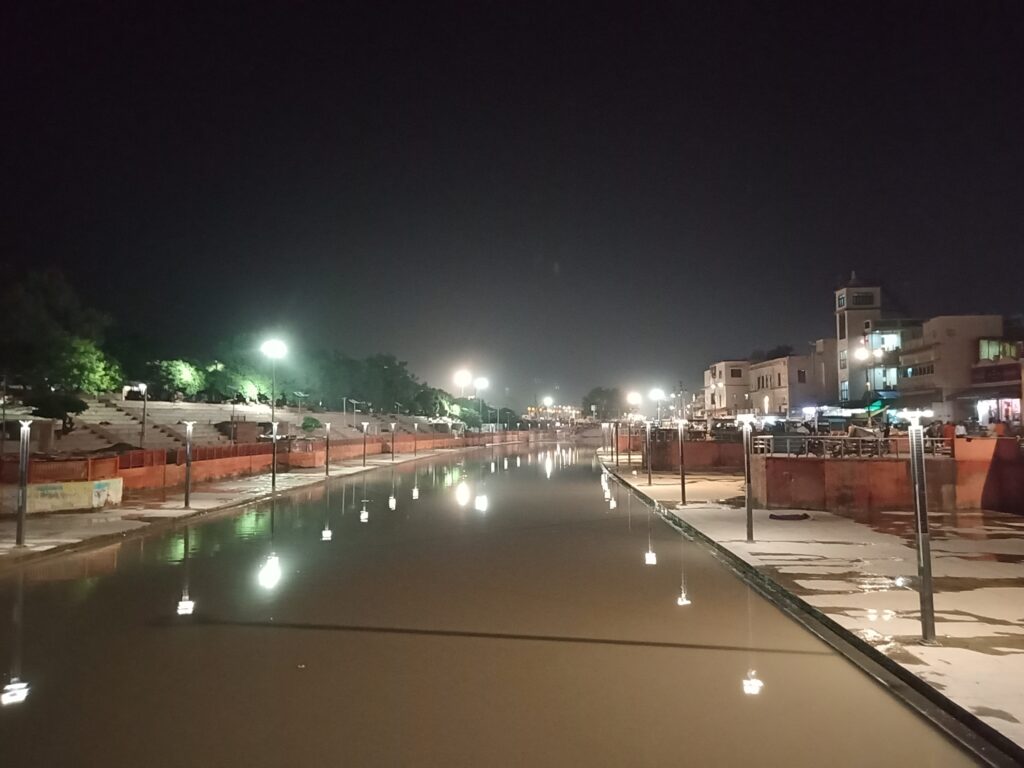
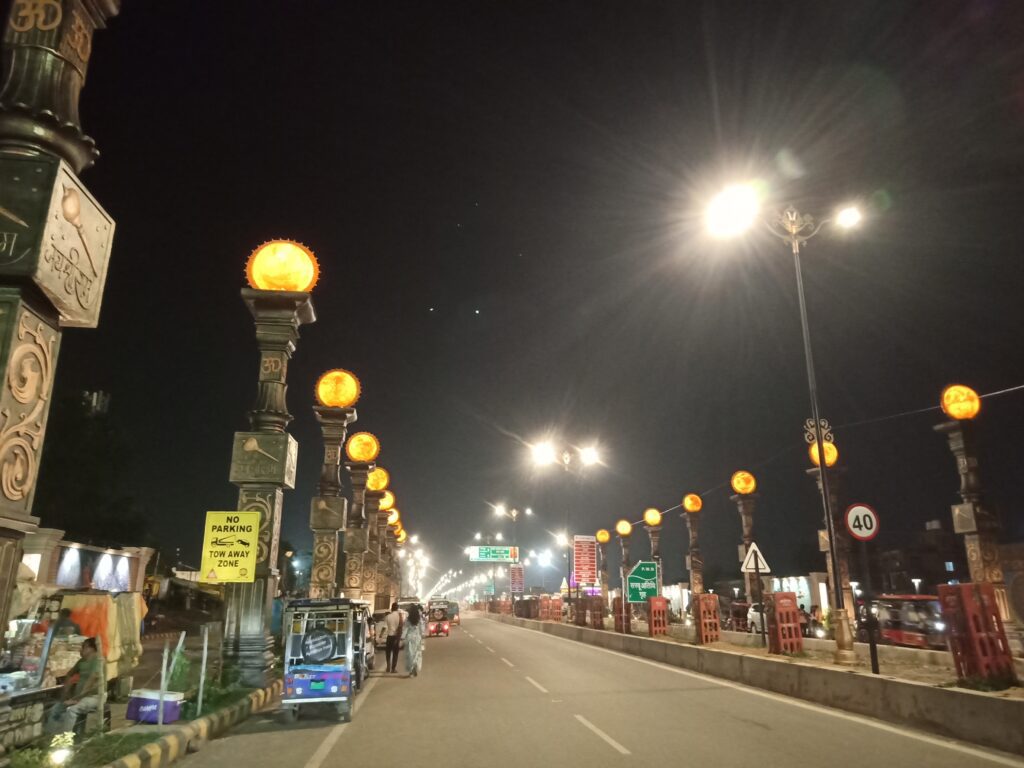
Architectural Marvel: The New Ram Janmabhoomi Temple
The newly inaugurated Ram Janmabhoomi Temple stands as a testament to Hindu devotion. Its grandeur, intricate carvings, and majestic design make it a landmark of religious significance and architectural beauty. This temple is not just a place of worship but a symbol of cultural pride.
Where to Stay
Ayodhya offers a range of accommodation options to suit various preferences and budgets. Here are some recommendations:
- Luxury Hotels: For those seeking a luxurious stay, several high-end hotels and resorts have sprung up in Ayodhya. These establishments offer state-of-the-art amenities, ensuring a comfortable and opulent experience. Most of these hotels are located either near Ramghat station or on the highway to give easy access to visitors’ cars.
- Mid-Range Hotels: There are numerous mid-range hotels that provide excellent value for money. These hotels offer comfortable rooms, essential amenities, and are often conveniently located near major attractions.
- Budget Accommodations: For budget-conscious travelers, Ayodhya has a variety of budget hotels, dharmshala and guesthouses. These establishments offer basic amenities at affordable prices, making it possible for everyone to experience the city’s charm. Most of these dharamshalas are very close to Ram Janmbhoomi temple on the Rampath Marg. The most famous of these is the Birla Dharmshala just opposite Ram Janmbhoomi temple.
Tourism and Culinary Delights
Ayodhya’s tourism scene is flourishing, attracting both pilgrims and tourists. The best time to visit is from October to March, when the weather is cool and pleasant. The local cuisine is a delightful experience, with must-try dishes like chaat, petha, and kachoris.
Budget-Friendly Travel
Traveling to Ayodhya doesn’t have to break the bank. Accommodation options range from budget-friendly hotels to more luxurious resorts. Local transportation is affordable, with state-run electric buses, e-rickshaw and golf carts providing environment friendly and economical options for getting around.
Conclusion
Ayodhya is a city that seamlessly blends its rich mythological heritage with modern developments. Whether you are a devout pilgrim or a curious traveler, Ayodhya promises a journey filled with profound spirituality, historical insights, and a glimpse into India’s evolving landscape. As you walk through its ancient lanes and witness its grand temples, you are sure to be captivated by the enduring legacy of this sacred city.
So pack your bags, embark on this spiritual journey, and immerse yourself in the timeless charm of Ayodhya. Whether you are traveling for the rich history, the new developments, or the serene spirituality, Ayodhya offers an experience that transcends time.

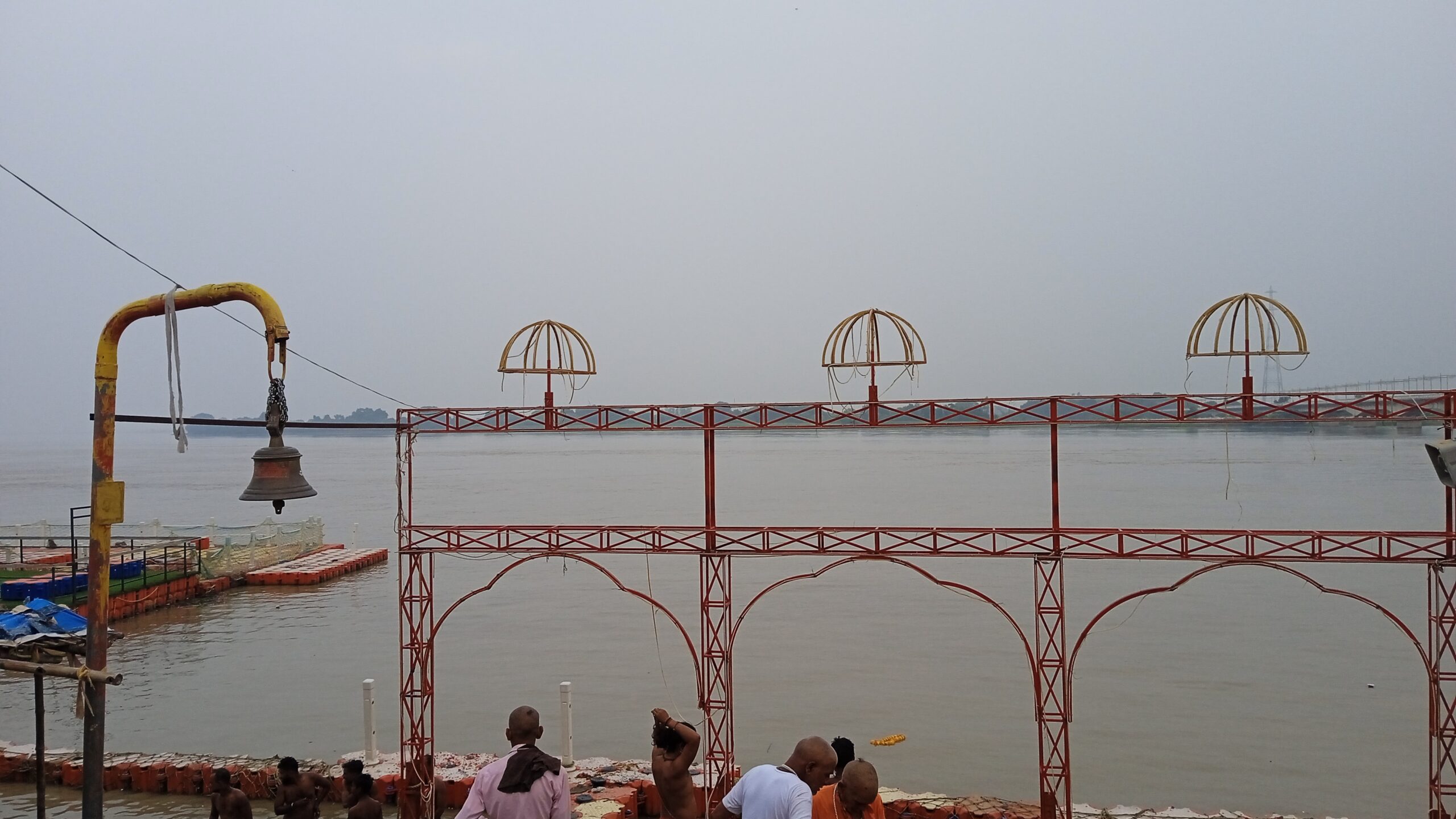
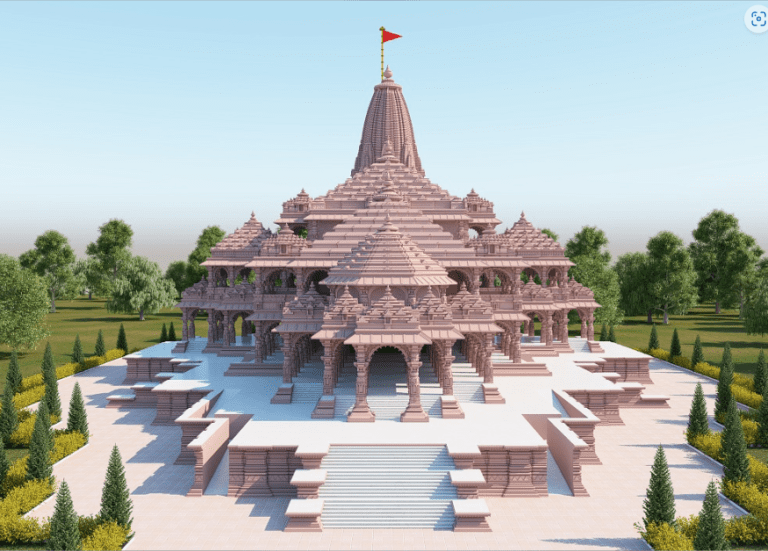
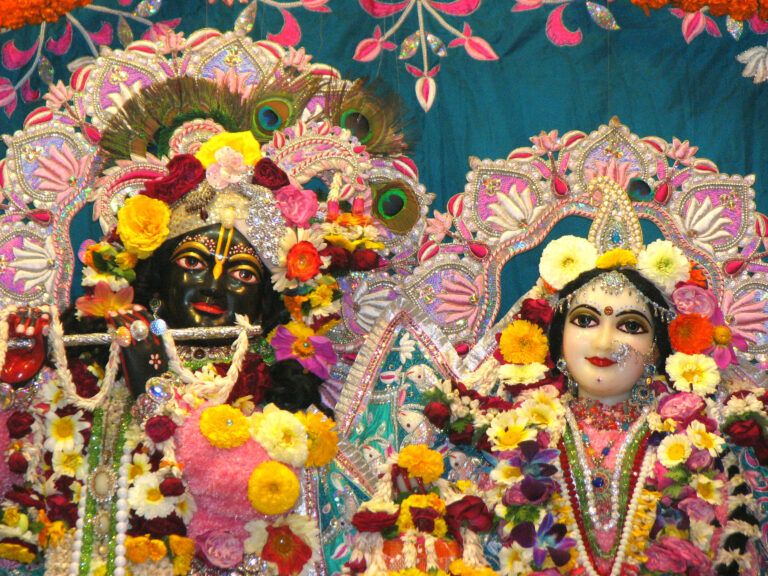


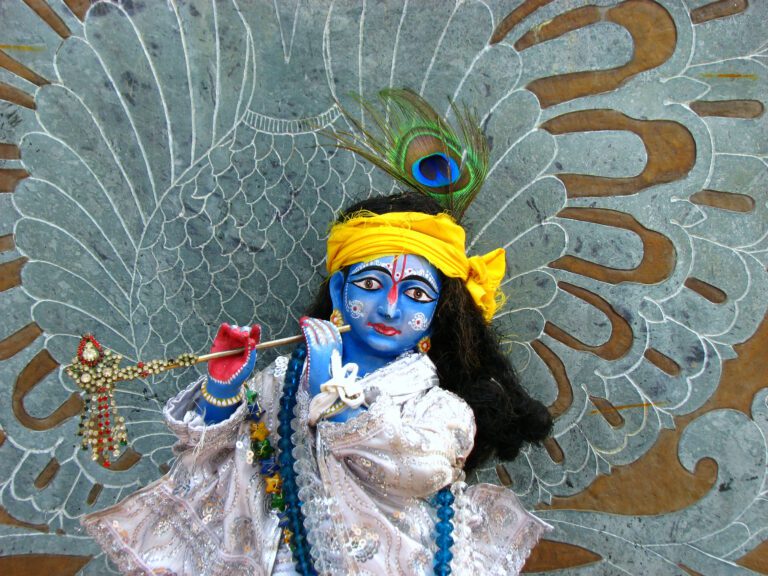

One Comment